
Guests
- Seth Rosenfeldauthor of the new book, Subversives: The FBI’s War on Student Radicals, and Reagan’s Rise to Power. Rosenfeld was an award-winning a reporter for the San Francisco Examiner and San Francisco Chronicle for almost 25 years.
Links
- "Subversives: The FBI's War on Student Radicals,and Reagan's Rise to Power." By Seth Rosenfeld. (Farrar, Straus and Giroux, 2012
- Read an Excerpt of Chapter 1 from “Subversives”
- Seth Rosenfeld’s Website
- History is a Weapon Website, “An End to History.”
- Part 2: Book Reveals Extensive Effort by Reagan, FBI to Undermine California’s Student Movement in 1960s
Investigative journalist Seth Rosenfeld’s new book, “Subversives: The FBI’s War on Student Radicals, and Reagan’s Rise to Power,” is based on more than 300,000 pages of records Rosenfeld received over three decades through five Freedom of Information lawsuits against the FBI. The book tracks how then-FBI director J. Edgar Hoover ordered his agents to investigate and then disrupt the Free Speech Movement that began in 1964 on the Berkeley campus of the University of California. The protests prevailed and helped spawn a nationwide student movement. Rosenfeld outlines in great detail how FBI records show agents used “dirty tricks to stifle dissent on the campus.” In the book’s more than 700 pages, he uses the documents to explore the interweaving stories of four main characters: the FBI’s J. Edgar Hoover; actor and politician Ronald Reagan, who was running for governor of California at the time; Clark Kerr, then the University of California president and a target of scorn from both Reagan, Hoover and student activists; and legendary Free Speech Movement leader and orator, Mario Savio. Click here to watch part 2 of the interview. [includes rush transcript]
Transcript
JUAN GONZÁLEZ: We want to continue our conversation with Seth Rosenfeld, longtime investigative reporter and author of Subversives: The FBI’s War on Student Radicals, and Reagan’s Rise to Power. Seth, we’ve had a long discussion on Richard Aoki, but he really is a small portion of your book. The large portion of it really deals, as the title says, with the FBI’s attempts to—through surveillance and repression of student radicals and university professors. You go into—in depth about the efforts of the agency against Mario Savio and the Free Speech Movement in Berkeley, and even against the president of the University of California system at the time, Clark Kerr. Could you talk a little bit about that?
SETH ROSENFELD: Yes. My book, Subversives, is a secret history of the '60s. It's the story of the FBI’s covert operations at the University of California at Berkeley and the surrounding campus community during the Cold War. It’s based on more than 250,000 pages of FBI documents. And one of the main parts of the book focuses on the Free Speech Movement of 1964 and Mario Savio.
The Free Speech Movement was one of the first major student protests of the 1960s. It was nonviolent. It was inspired by the civil rights movement. And it was actually a protest against a campus rule that prohibited students from engaging in any kind of political activity on campus. So, for example, if students wanted to hand out a leaflet for the Republican National Convention, which in the summer of '64 was at the Cow Palace in San Francisco, they were prohibited from doing that. If they wanted to hand out a leaflet saying, “Come to this civil rights demonstration,” they couldn't do that, either. The students felt that this was an unconstitutional abridgment of their First Amendment rights. And that’s what the protest was about.
Mario Savio emerged as perhaps the most prominent spokesperson for the Free Speech Movement. Mario is a fascinating character. He was born in New York City in 1942. He was extremely bright, had a above genius-level IQ and, in high school, a 96.6 grade point average. He was raised in a very religious Catholic family. He was brought up to be a priest. And he, for much of his early life, thought he would become a priest. But as he went through high school, he began to have doubts about his faith. He began to question the dogma and became interested in philosophy and science. He began to look elsewhere to, as he put it—excuse me—as he put it, to do good in the world.
AMY GOODMAN: You know, while you take a water break, I thought we would play a clip. UC Berkeley’s Sproul Plaza first drew national attention in 1964 when thousands of students struggled for their right to free speech on campus, led by, as you’re describing, student activist Mario Savio. This is a speech he delivered nearly half a century ago on the steps of Sproul Hall.
MARIO SAVIO: There’s a time when the operation of the machine becomes so odious, makes you so sick at heart, that you can’t take part, you can’t even passively take part, and you’ve got to put your bodies upon the gears and upon the wheels, upon the levers, upon all the apparatus, and you’ve got to make it stop. And you’ve got to indicate to the people who run it, to the people who own it, that unless you’re free, the machine will be prevented from working at all.
AMY GOODMAN: That was Mario Savio. Give us the context, as you continue with Mario Savio’s story, of this address.
SETH ROSENFELD: Yes. Mario actually had a very debilitating stutter when speaking in small groups of people. But when he was impassioned and speaking against what he believed was injustice, he spoke with divine fire. And that speech is an example of that. And people who were in that audience in the crowd on Sproul Plaza that day have said that that speech sent shivers down their backs. He moved people to participate. And as a result of his speech and all the work that the Free Speech Movement had done, more than a thousand people streamed into Sproul Hall and staged what was the nation’s largest sit-in to date, overnight, more than 800 people arrested the next day. And this was shocking that students would engage in this kind of behavior. At that time in our history, most campuses were characterized by a kind of complacency and conformity. The Free Speech Movement was a major break from that, and it was very shocking to people, particularly J. Edgar Hoover.
According to the FBI documents that I’ve reviewed, the FBI had special concerns about the University of California, starting at least in World War II. As you know, the University of California played a key role in developing the atomic bomb that was used to end World War II. And during the war and immediately thereafter, there were Soviet efforts to obtain, through espionage, using members of the Communist Party, secrets from the radiation lab. So, some of the records I look at document the FBI’s extensive investigation into Soviet espionage at the University of California, Berkeley, in the 1940s.
But what you see in the following decades is the FBI, under J. Edgar Hoover, veers from that important national security mission to focus instead on professors engaged in dissent. And during the 1950s, the FBI had a secret program called the Responsibilities Program. And through this program, FBI agents secretly gave governors of nearly every state allegations against professors who were deemed to be too radical or too liberal. The governors would take this information secretly, pass it along to university officials and have them investigate and question and sometimes fire the professors. The professors never knew where these allegations came from. They never had the opportunity to cross-examine the witnesses against them. Then, later—
JUAN GONZÁLEZ: And, Seth Rosenfeld, as you mention—
SETH ROSENFELD: I’m sorry.
JUAN GONZÁLEZ: As you mention in the book, often the allegations that the FBI passed on were wrong, were erroneous, and people were tarred just because they may have been—had met with somebody who was politically active in a left-wing movement, so that much of the information the FBI passed on was erroneous.
SETH ROSENFELD: Yes, that’s true. In a number of instances, I was able to document that, in the case of California, the governor at the time, Earl Warren, passed along these reports to the president of the university, Robert Gordon Sproul. And when the university investigated them, they found they were unsubstantiated. So—
AMY GOODMAN: And the role of—
SETH ROSENFELD: —that was an extensive program, and nearly a thousand professors around the country were forced from their jobs as a result of it in the early 1950s.
Then, in the very early 1960s, you see—late ’50s, early ’60s, you see the FBI shift its focus to students who are engaged in political dissent. The FBI starts to investigate them and creates—actually has a list call the “Security Index.” This is a list of people who are deemed potential threats to national security in the event of a national emergency and who would be arrested without warrant and detained indefinitely during an emergency. And quite a few professors and students at Berkeley in the early ’60s were on this secret list. In fact, at that time, former agents told me that the FBI considered Berkeley to be one of the most radical cities in the United States, with the highest per capita number of people on the Security Index.
So, to come back to the Free Speech Movement, when that happens in 1964, J. Edgar Hoover and other FBI officials see this as further evidence of a subversive plot to disrupt the nation’s campuses, and they respond by intensively investigating it and going beyond investigating it with secret efforts to disrupt it and neutralize it in various ways.
AMY GOODMAN: Seth Rosenfeld, we don’t have much time. We have less than two minutes. But you’re following the trajectory of Ronald Reagan, who famously said in 1970, “If it takes a bloodbath, let’s get it over with. No more appeasement.” He’s talking about the students. The role—how extensively Ronald Reagan was involved with the FBI, more than was previously known?
SETH ROSENFELD: Yes, he was much more involved with the FBI than previously known. And one of the arguments in my book is that his covert relationship with the FBI had a profound influence on his political development. This relationship begins in Hollywood in the years immediately after World War II, when FBI agents approached Ronald Reagan, and he becomes an informer. And he names other people in Hollywood, actors, who he suspects of subversive activity. And he names more people than we’ve previously known. Through my Freedom of Information Act lawsuits, I obtained more than 10,000 pages on Ronald Reagan during his pre-presidential years. This is the most extensive record of the FBI’s activities concerning him. When Reagan is president of the Screen Actors Guild, the FBI has wide access to information from Guild records about actors whom the FBI is investigating. And then, later, the FBI returns the favor to Reagan by doing personal and political help for him. During my Freedom of Information Act lawsuit, the FBI was withholding certain information, claiming it was law enforcement information. And I challenged that. I said the context suggests that this is actually personal and political help. And the court agreed and ordered the information released. And what those records show—
AMY GOODMAN: Five seconds.
SETH ROSENFELD: —is that in 1960, for example, the FBI, at the request of Ronald Reagan and his former wife, Jane Wyman, conducted an investigation into the romantic life of his daughter, Maureen Reagan. The Reagans had heard that she was living with—she was then 18, living in Washington, D.C., and they had heard that she was living with an older married policeman.
AMY GOODMAN: We’re going to have to leave it there, Seth Rosenfeld, author of Subversives.


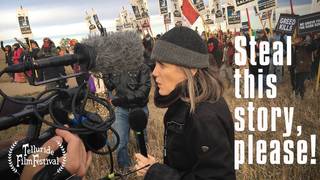
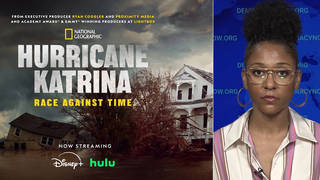

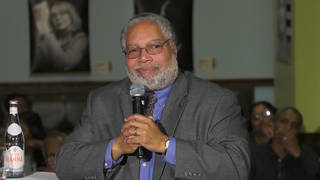

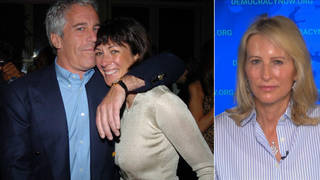
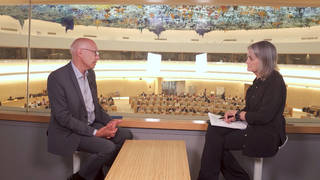

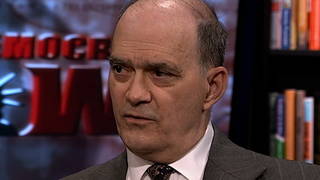
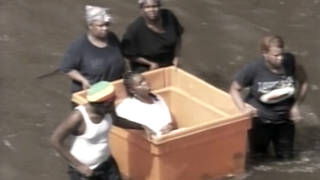
Media Options